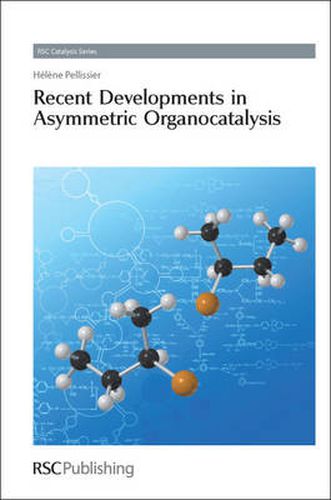Readings Newsletter
Become a Readings Member to make your shopping experience even easier.
Sign in or sign up for free!
You’re not far away from qualifying for FREE standard shipping within Australia
You’ve qualified for FREE standard shipping within Australia
The cart is loading…






The aim of this book is to cover the very recent developments in asymmetric organocatalysis, focussing on those published since the beginning of 2008. The last decade has witnessed an explosive growth in the field of asymmetric organocatalysis with an impressive amount of new catalysts, novel methodologies, and applications in numerous reaction types, such as nucleophilic substitutions, addition reactions, as well as cycloadditions, oxidations, reductions, kinetic resolutions, and miscellaneous reactions. This very diverse and intensely developing field is too wide to cover in a single review. The timeliness of the book together with the expected impact is excellent, since nowadays asymmetric organocatalysis is arguably the most intensively developed field in organic chemistry. The book is designed to meet the demands of a postgraduate textbook,containing case studies and Q&A sections, as well as a practical book filled with facts and data useful as a working tool for the practitioner. The book is divided into ten sections, dealing successively with nucleophilic additions to electron-deficient C=C double bonds, nucleophilic additions to C=O double bonds, nucleophilic additions to C=N double bonds, nucleophilic additions to unsaturated nitrogen, nucleophilic substitutions at aliphatic carbon, cycloaddition reactions, oxidations, reductions, kinetic resolutions and desymmetrisations, and miscellaneous reactions.
$9.00 standard shipping within Australia
FREE standard shipping within Australia for orders over $100.00
Express & International shipping calculated at checkout
The aim of this book is to cover the very recent developments in asymmetric organocatalysis, focussing on those published since the beginning of 2008. The last decade has witnessed an explosive growth in the field of asymmetric organocatalysis with an impressive amount of new catalysts, novel methodologies, and applications in numerous reaction types, such as nucleophilic substitutions, addition reactions, as well as cycloadditions, oxidations, reductions, kinetic resolutions, and miscellaneous reactions. This very diverse and intensely developing field is too wide to cover in a single review. The timeliness of the book together with the expected impact is excellent, since nowadays asymmetric organocatalysis is arguably the most intensively developed field in organic chemistry. The book is designed to meet the demands of a postgraduate textbook,containing case studies and Q&A sections, as well as a practical book filled with facts and data useful as a working tool for the practitioner. The book is divided into ten sections, dealing successively with nucleophilic additions to electron-deficient C=C double bonds, nucleophilic additions to C=O double bonds, nucleophilic additions to C=N double bonds, nucleophilic additions to unsaturated nitrogen, nucleophilic substitutions at aliphatic carbon, cycloaddition reactions, oxidations, reductions, kinetic resolutions and desymmetrisations, and miscellaneous reactions.